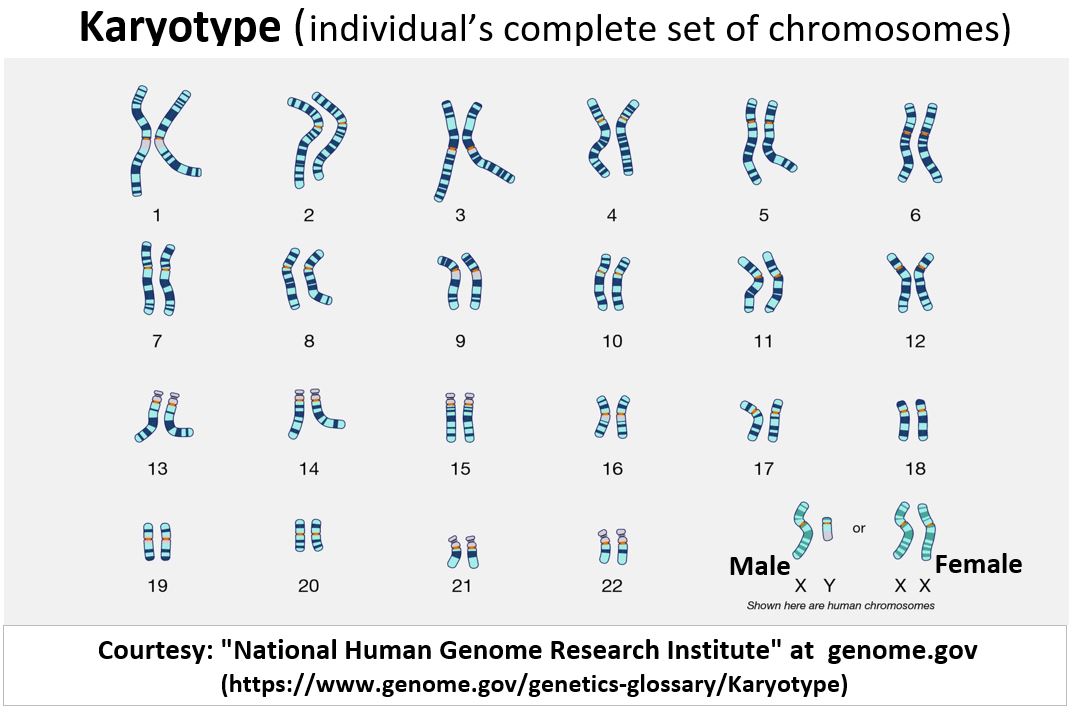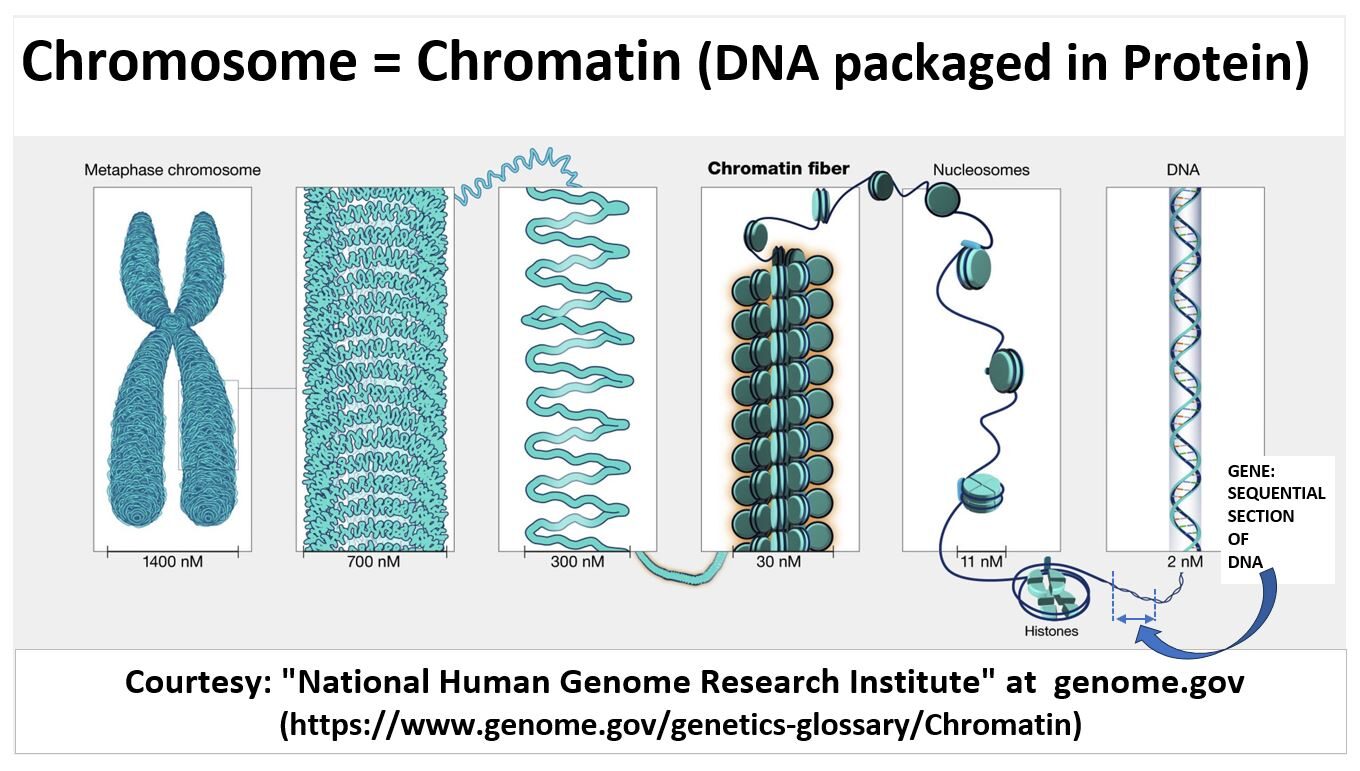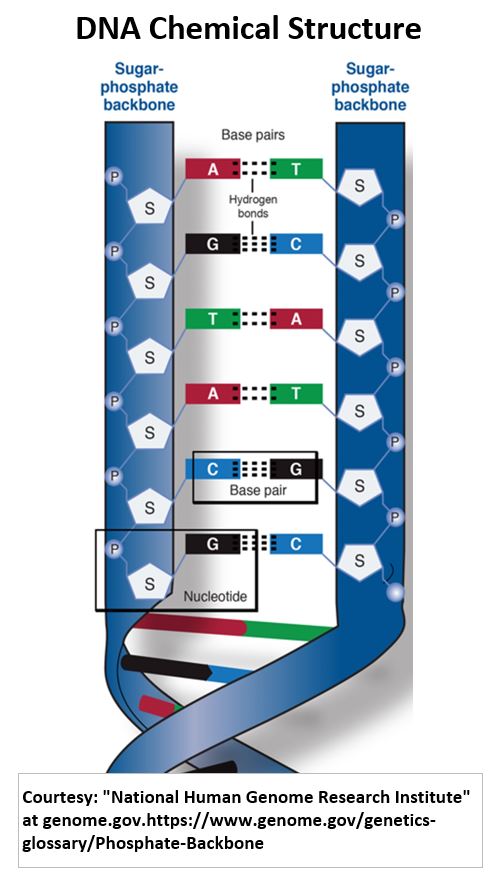Menu (linked Index)
Genetics Basics
Last Update: October 25, 2024
Introduction
The nucleotide chemical structures of these molecules are arguably the most important chemical structures in our bodies.
This post will only give you a broad brush introduction to the topic.
If you want a more comprehensive review, I would start with Khanacademy.org (search under “genetics” or “DNA” and you will find several videos and documents of interest).
Another excellent resource is the National Human Genome Research Institute.
Genetics: Chromosomes
Did you know that…
- All of your genetic material is located in your Chromosomes.
- Chromosomes are made up of DNA (Deoxyribonucleic Acid) and protein.
- Chromosomes are located in the nuclei of human cells.
Picture_Animal Cells Components
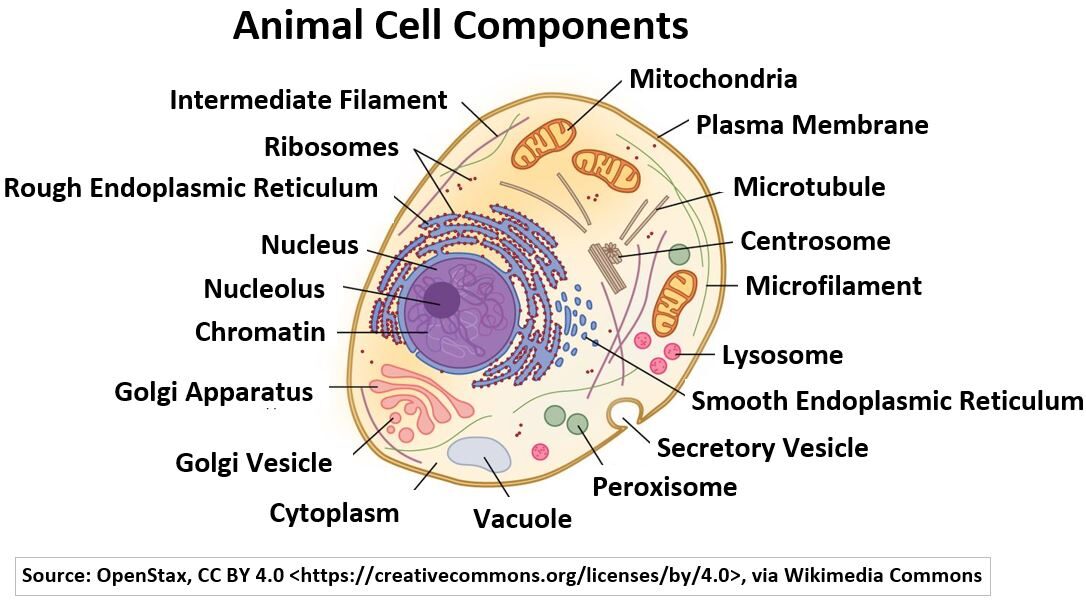
- There is also some DNA located in the Mitochondria of cells.
- A full ‘set’ of 46 Chromosomes are located in almost all your cells of which you have Trillions (30 Trillion according to this source).
- Mature Red Blood Cells in humans do not contain DNA because they lack a Nucleus.
- You have 46 total chromosomes in 23 pairs (23 from you mom and 23 from your dad).
- Each chromosome contains a single strand of DNA with other molecules (proteins called Histones) packaged around it.
- An individual’s complete set of chromosomes is called a Karyotype (See Picture of Karyotype below).
Picture_Karyotype
- Chromosomes are considered pairs because each contains the “almost” same genes in the same positions.
- You get your traits from one or the other.
- These “almost same” genes are called alleles (one set from mom; one set from dad).
- One pair out of the 23 pairs differentiates Males (XY chromosome pair) from Females (XX chromosome pair).
- The chromosome consists of DNA packaged in protein which in total is called Chromatin.
Check out the unraveling of a chromosome in the picture below.
Picture_Chromosome / Chromatin 
- Look at the above schematic from www.genome.gov.
- This visual shows a chromosome pair (which only looks like this when cells are dividing) being unwound from a very dense “ball of yarn” all the way to a strand of DNA.
- Very cool. For your reference, 1 nM is 1×10-9 meters = .000000001 meters. i.e. extremely small.
- Each chromosome contains 1 strand of DNA held in structural protein (think about that, just one).
- The main protein structures in chromosomes are called Histones (see drawing above).
- So you have 46 individual molecules (strands) of DNA in almost all cells in your body.
- If you stretched out all 46 DNA molecules of one cell in a straight line, it would be about 2 meters (6.6 feet) in length!
- Remember you have ∼37 trillion cells of which lets say 99% contain DNA.
- .99 x 37 Trillion x 2 meters = 73 Trillion Meters = 73 Billion kilometers = 45.4 Billion miles.
- It took Nasa’s New Horizons spacecraft 10 years to travel 3 billion miles for a Pluto flyover.
- Travelling at the same speed, it would take New Horizons about 151 years to travel 45.4 billion miles!
Genetics: DNA and RNA Structure
Gene
Consider a discrete section of DNA as shown in the drawing below.
Picture_Gene A Segment of DNA
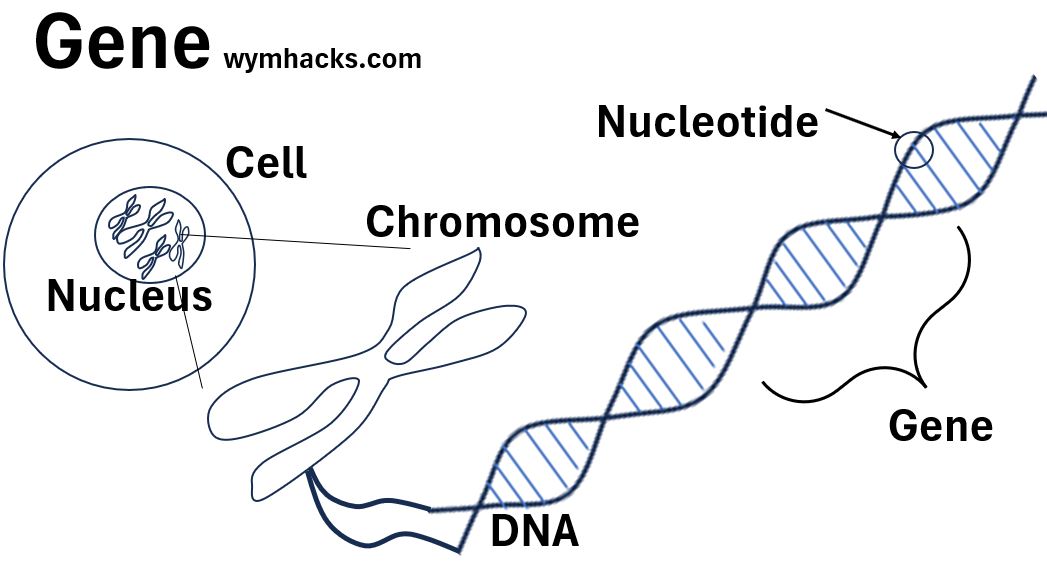
- This sequential section of DNA that contains code for producing proteins is called a Gene.
- So, a Gene is a specific segment of DNA that contains an aspect of the traits you’ve inherited from your offspring.
- Today people think, 20,000 to 25,000 genes (only about 1% to 2% of our full genetic material or genome) “code for protein” i.e. carry our inherited traits.
- The rest of the genome however plays other critical roles (e.g. regulating genes, packaging DNA, etc.)
DNA and RNA Structure
- DNA is a double helix structured molecule with pairs of nitrogen containing molecules connecting the two sides (like rungs in a ladder).
- The pairs are Adenine (A) – Thymine (T) and Guanine (G) – Cytosine (C).
- RNA (Ribonucleic Acid) is a close cousin of DNA and is the molecule (version called mRNA) that takes the genetic information from DNA out of the Nucleus and into the cell’s cytoplasm where this information is translated into protein production.
- RNA has a similar structure to DNA but has a single strand (backbone) with single bases attached to it { Adenine (A) , Uracil (U) ,Guanine (G), Cytosine (C)}.
- The backbones of DNA and RNA consist of Phosphate-Sugar- Nitrogenous Base molecules called Nucleotides.
Picture_Example Adenine-Ribose Nucleotide
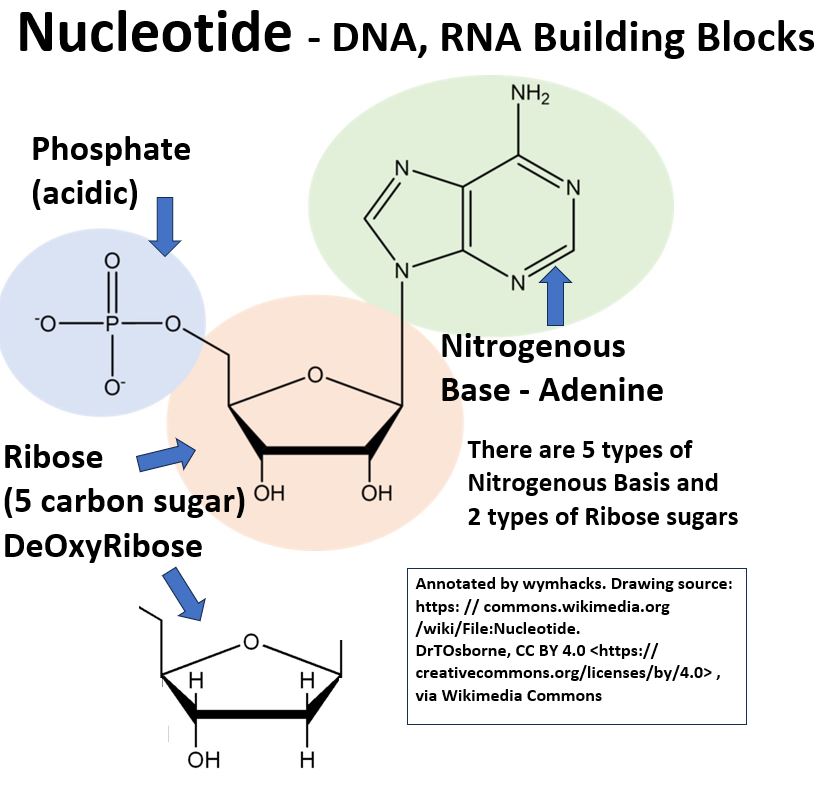
- The DNA and RNA nucleotide sugars structure differ in the sugar type and possibly the base type
- RNA contains a Ribose sugar versus DeOxyRibose for DNA
- DNA contains 2 pairs of Bases Adenine-Thymine or Guanine Cytosine
- RNA contains single bases Adenine, Uracil (instead of Thymine), Guanine, and Cytosine
- The drawing below from www.genome.gov shows a hypothetical structure of a small strand of DNA.
- Its Nucleotides connect with each other via alternating phosphate and sugar groups to
- form the backbone of DNA molecules (the ladder sides).
- The Nucleotides also connect one side of the DNA molecule to the other via hydrogen bonding of their base pairs (Adenine-Thymine or Guanine-Cytosine).
Picture_DNA Chemical Structure
- Tens of millions of rungs (base pairs) might represent one DNA molecule.
- One copy of the human genome consists of approximately 3 billion base pairs of DNA, which are distributed across 23 chromosomes.
Below are a few more drawings showing the differences and similarities among the molecular components of RNA and DNA
Picture_Nucleic Acids DNA and RNA
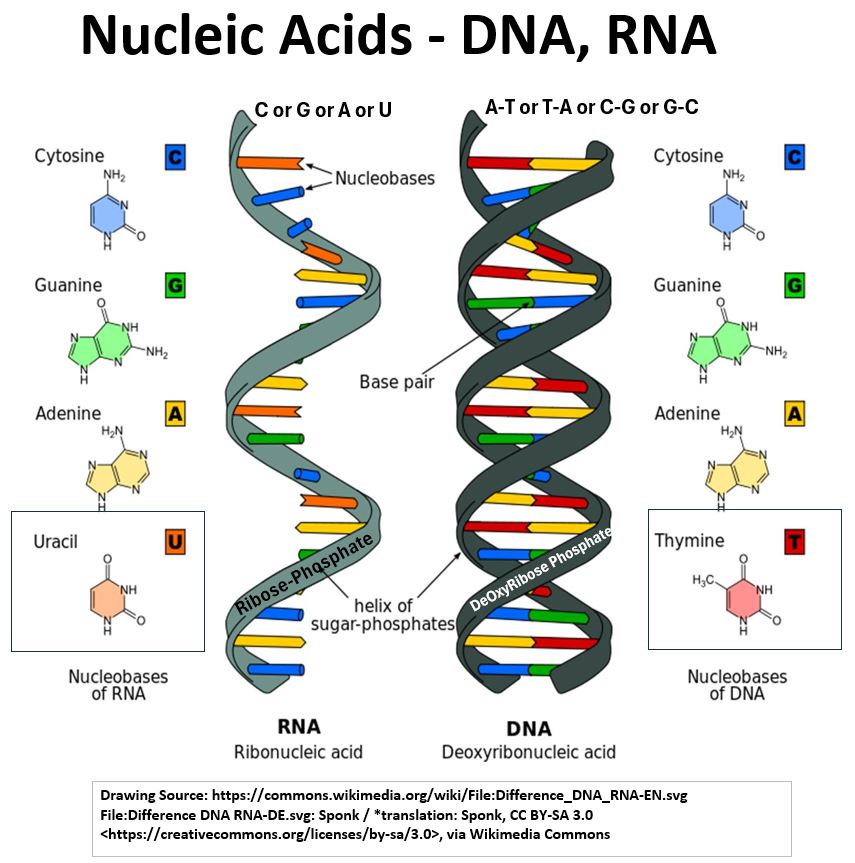
Picture_DNA RNA Nucleotide Base Structures Adenine, Guanine, Cytosine, Thymine, Uracil
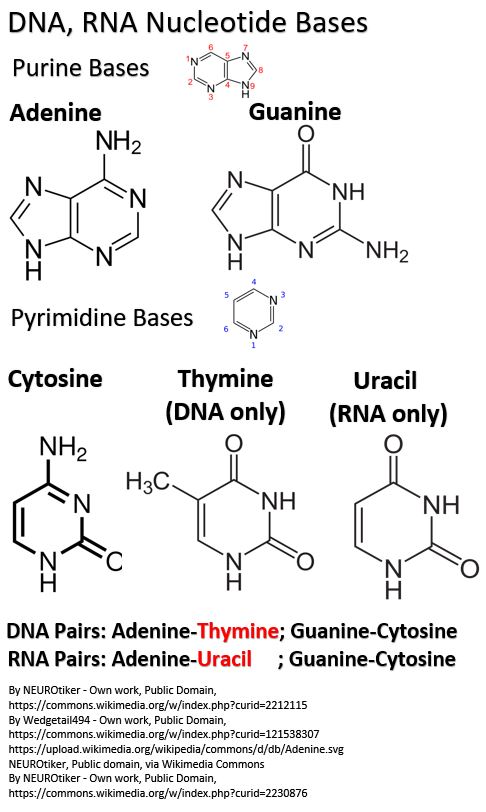
Picture_DNA_Backbone and Base Components
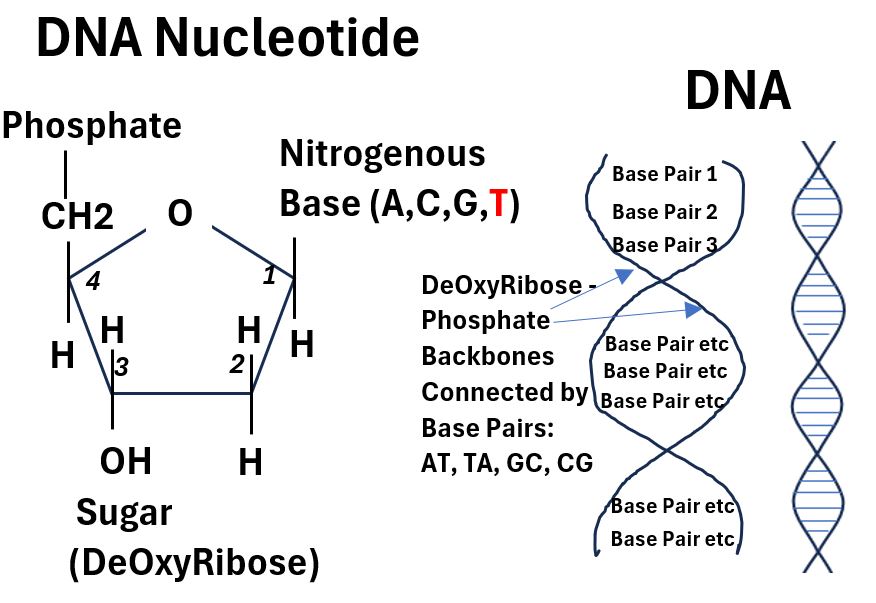
Picture_RNA_Backbone and Base Components
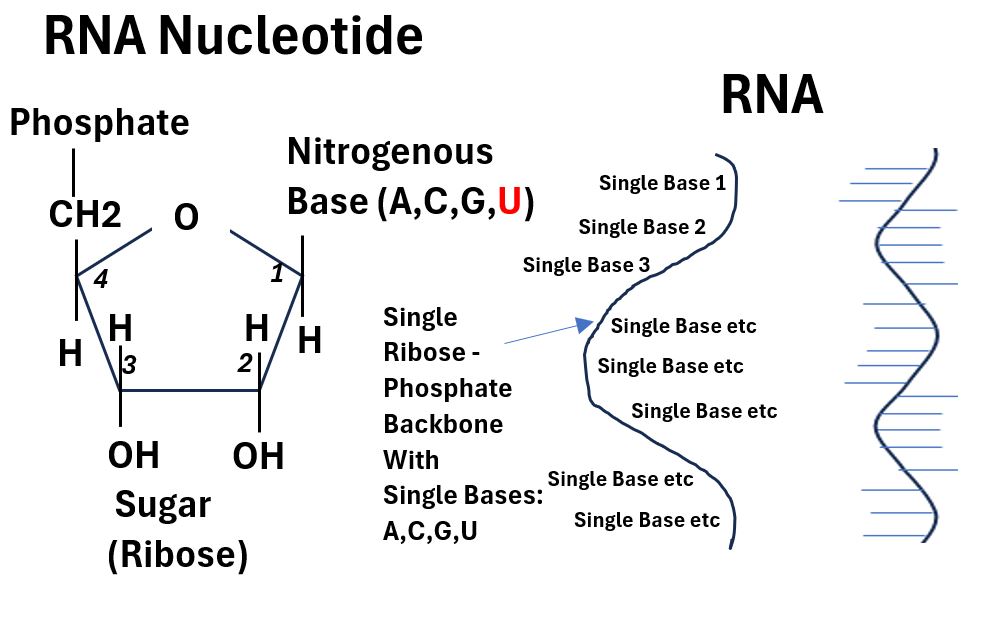
Genetics: Transcription and Translation
From DNA to Protein (Transcription and Translation)
- See this excellent Khanacademy video on RNA Transcription and Translation
- DNA resides in the Nucleus of cells.
- DNA can Replicate in the Cell Nucleus.
- It can also, in a process called Transcription, effectively split down the middle (with slight modifications) to produce RNA molecules. These RNA contain the genetic code needed to produce proteins. This also happens in the Cell Nucleus.
- These RNA (called messenger RNA or mRNA) can leave the nucleus, enter the cytoplasm, and undergo a process called Translation where the genetic code is translated into different series of amino acids (i.e. proteins).
- Other key players in this code transfer and protein production process are Ribosomes (the cell’s protein factory) and tRNA (the protein production machine).
- Ribosomes are the cellular structures that provide the platform for mRNA and tRNA to interact during the process of protein synthesis (translation).
Picture_DNA Transcription and mRNA Translation
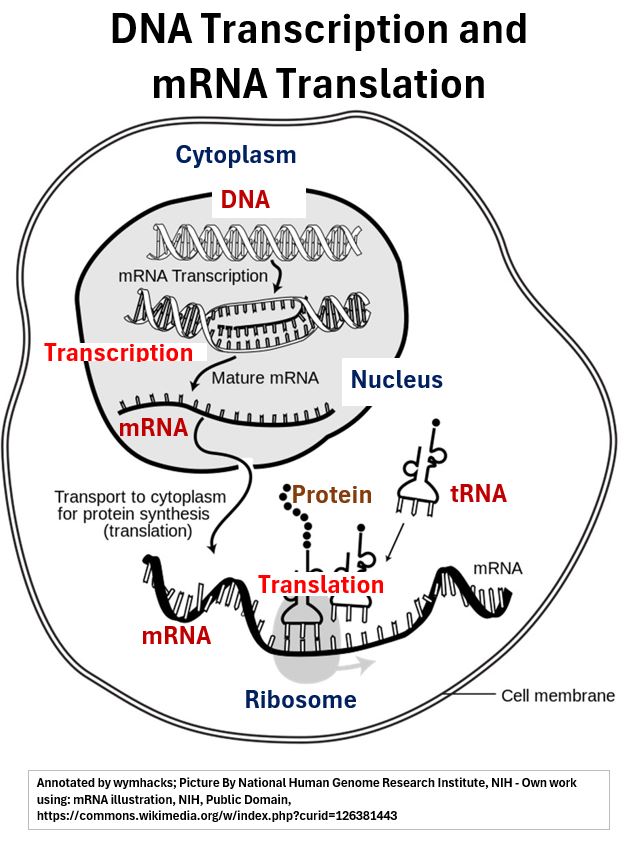
Genetics References
Learn more about this amazing subject via the links below!
- National Human Genome Research Institute
- Watch the 2001 PBS NOVA “Cracking the Code of Life” (find in You Tube)
- Organelles in Eukaryotic cells – major components in a human cell
- Watch this. So interesting! Gene expression and regulation
- Introduction to nucleic acids and nucleotides
- DNA
- DNA structure and function
- DNA replication and RNA transcription and translation
- Intro to gene expression (Central Dogma)-doc
- Central dogma of molecular biology
- Chromosomes
- Chromosomes article
- Alleles
Disclaimer: The content of this article is intended for general informational and recreational purposes only and is not a substitute for professional “advice”. We are not responsible for your decisions and actions. Refer to our Disclaimer Page.
